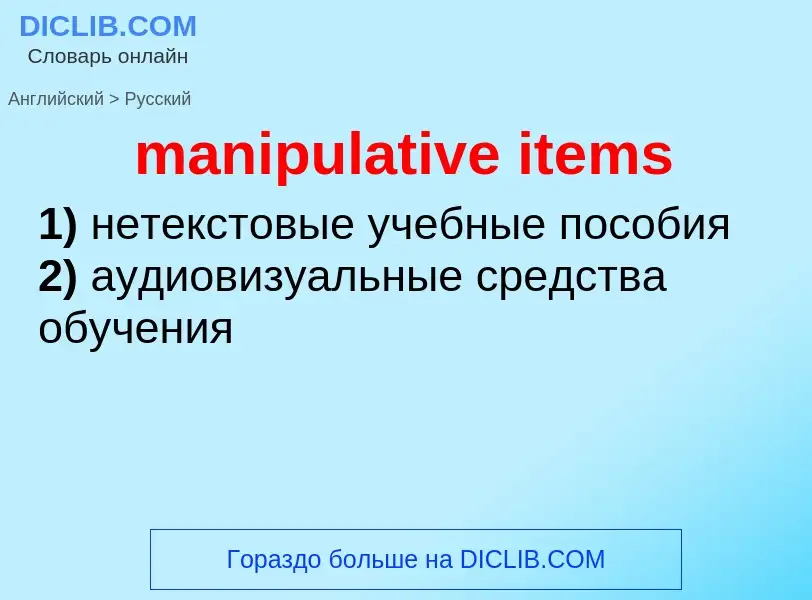Перевод и анализ слов искусственным интеллектом ChatGPT
На этой странице Вы можете получить подробный анализ слова или словосочетания, произведенный с помощью лучшей на сегодняшний день технологии искусственного интеллекта:
- как употребляется слово
- частота употребления
- используется оно чаще в устной или письменной речи
- варианты перевода слова
- примеры употребления (несколько фраз с переводом)
- этимология
manipulative items - перевод на русский
медицина
мануальная терапия
[ɔsti'ɔpəθi]
медицина
остеопатия
поражение кости
существительное
медицина
остеопатия
общая лексика
манипуляционное поведение
манипулирование
['ɔstiəpæθ]
общая лексика
костоправ
медицина
остеопат
существительное
общая лексика
остеопат
[ɔstiə'pæθik]
медицина
остеопатический
прилагательное
медицина
остеопатический
[kə'lektəz|aitəm-{kə'lektəz}pi:s]
синоним
Определение
Википедия
In mathematics education, a manipulative is an object which is designed so that a learner can perceive some mathematical concept by manipulating it, hence its name. The use of manipulatives provides a way for children to learn concepts through developmentally appropriate hands-on experience.
The use of manipulatives in mathematics classrooms throughout the world grew considerably in popularity throughout the second half of the 20th century. Mathematical manipulatives are frequently used in the first step of teaching mathematical concepts, that of concrete representation. The second and third steps are representational and abstract, respectively.
Mathematical manipulatives can be purchased or constructed by the teacher. Examples of common manipulatives include number lines, Cuisenaire rods; fraction strips, blocks, or stacks; base ten blocks (also known as Dienes or multibase blocks); interlocking linking cubes (such as Unifix); construction sets (such as Polydron and Zometool); colored tiles or tangrams; pattern blocks; colored counting chips; numicon tiles; chainable links; abaci such as "rekenreks", and geoboards. Improvised teacher-made manipulatives used in teaching place value include beans and bean sticks, or single popsicle sticks and bundles of ten popsicle sticks.
Virtual manipulatives for mathematics are computer models of these objects. Notable collections of virtual manipulatives include The National Library of Virtual Manipulatives and the Ubersketch.
Multiple experiences with manipulatives provide children with the conceptual foundation to understand mathematics at a conceptual level and are recommended by the NCTM.
Some of the manipulatives are now used in other subjects in addition to mathematics. For example, Cuisenaire rods are now used in language arts and grammar, and pattern blocks are used in fine arts.

![A [[Polydron]] [[icosahedron]] A [[Polydron]] [[icosahedron]]](https://commons.wikimedia.org/wiki/Special:FilePath/Polydron 09489.jpg?width=200)
 (14756710206).jpg?width=200)

![manipulation]] of [[bone]]s, [[muscle]]s, [[joint]]s, and [[fascia]]e. manipulation]] of [[bone]]s, [[muscle]]s, [[joint]]s, and [[fascia]]e.](https://commons.wikimedia.org/wiki/Special:FilePath/Manuellterapi5.jpg?width=200)

![The [[original iPhone]] in its box. Unopened "vintage" items which are part of popular brand lines are widely regarded as collector's items. The [[original iPhone]] in its box. Unopened "vintage" items which are part of popular brand lines are widely regarded as collector's items.](https://commons.wikimedia.org/wiki/Special:FilePath/Apple iPhone 2G 8GB (02).jpg?width=200)
